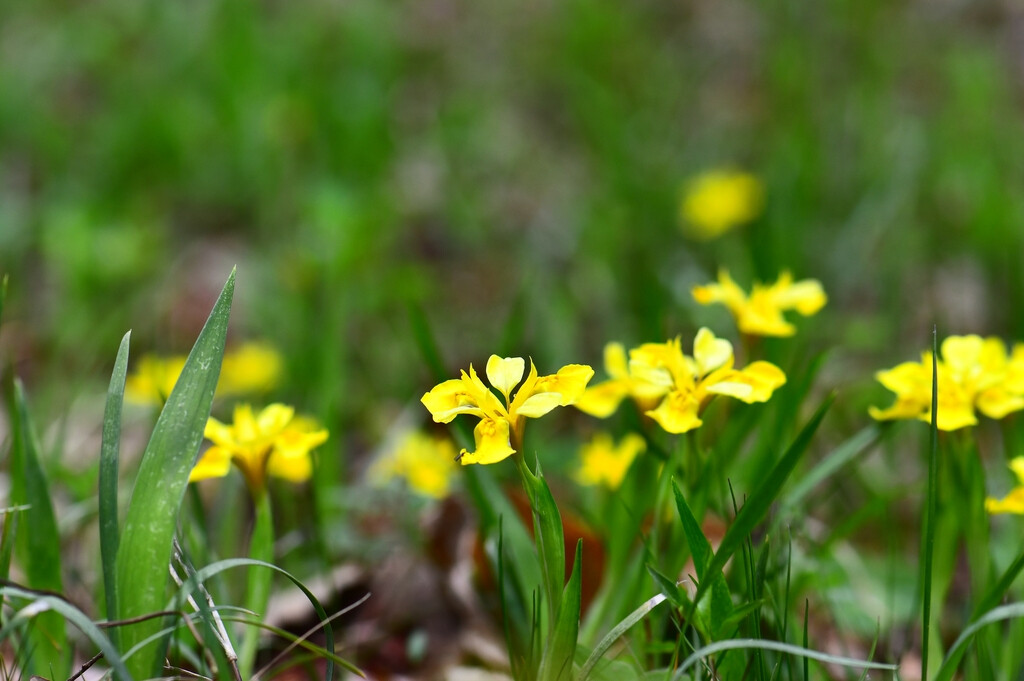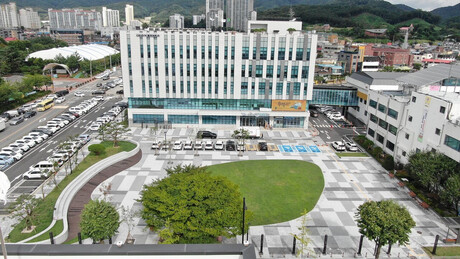
CHEONAN, South Korea – Cheonan City today announced a collaborative initiative to protect and restore endangered species, with a focus on the yellow iris (Iris minutoaurea), a critically endangered wildflower. A signing ceremony for the "Cheonan City Endangered Species Restoration Project" was held at Seongseong Lake Park, formalizing a partnership between Cheonan City, Samsung Electronics Cheonan Campus, and the Chollipo Arboretum.
The partnership seeks to establish and maintain a vital habitat for the yellow iris, designated as a Class II Endangered Wild Species by the Ministry of Environment. This concerted effort aims to counteract the significant threats posed by climate change and rapid urban development that have pushed the yellow iris to the brink of extinction.
The agreement solidifies the roles of each participating entity. Cheonan City will provide essential support for habitat protection and management. Samsung Electronics Cheonan Campus will contribute financial and operational resources to the project. The Chollipo Arboretum, a renowned ex-situ conservation institution, will be responsible for the delicate transplantation of yellow irises and ongoing ecological monitoring to ensure their successful establishment and growth.
The signing ceremony was attended by approximately 40 representatives, including Kim Suk-pil, Acting Mayor of Cheonan City; Park Chang-yong, Head of the EHS Team at Samsung Electronics Cheonan Campus; and Kim Kun-ho, Director of Chollipo Arboretum. Following the signing, participants collectively planted yellow iris specimens, symbolizing the commencement of this crucial environmental endeavor.
The Plight of the Yellow Iris
The yellow iris, also known as Iris minutoaurea, is a perennial herbaceous plant native to East Asia, particularly found in wetland areas. Its vibrant yellow blooms typically appear in late spring to early summer, adding a splash of color to its natural habitat. However, its existence has been severely threatened. Habitat loss due to wetland reclamation for agriculture and urban development, coupled with changes in water quality and climate patterns, has drastically reduced its populations. The plant's specific ecological requirements, such as moist, well-drained soil and partial sunlight, make it particularly vulnerable to environmental disturbances. Its designation as a Class II Endangered Wild Species underscores the urgent need for conservation efforts to prevent its complete disappearance from the wild.
A Model for Collaborative Conservation
This project stands as a significant example of a multi-sectoral approach to biodiversity conservation. The collaboration between a local government (Cheonan City), a leading global corporation (Samsung Electronics), and a specialized botanical institution (Chollipo Arboretum) creates a robust framework for long-term ecological restoration. This model can serve as a blueprint for other regions facing similar environmental challenges, demonstrating how shared responsibility and diverse expertise can lead to impactful conservation outcomes.
Cheonan City's proactive engagement in this initiative reflects a growing recognition of the importance of preserving local biodiversity and enhancing ecosystem services. The Seongseong Lake Park, already a popular recreational area, is poised to become a vital ecological sanctuary, offering both educational opportunities for citizens and a safe haven for endangered flora.
Vision for a Greener Future
Acting Mayor Kim Suk-pil emphasized the broader implications of the project, stating, "This initiative represents a new stride in enhancing biodiversity and preserving our ecosystem. We hope that citizens will directly encounter the flourishing yellow irises at Seongseong Lake Park and genuinely appreciate their ecological value."
The successful establishment of the yellow iris habitat is expected to contribute significantly to the overall biological diversity of the region. By restoring this key species, the project aims to strengthen the resilience of the local ecosystem, fostering a healthier environment for both wildlife and human residents. This endeavor not only protects a single endangered plant but also highlights the interconnectedness of all living things and the importance of human stewardship in safeguarding natural heritage for future generations.
[Copyright (c) Global Economic Times. All Rights Reserved.]





























